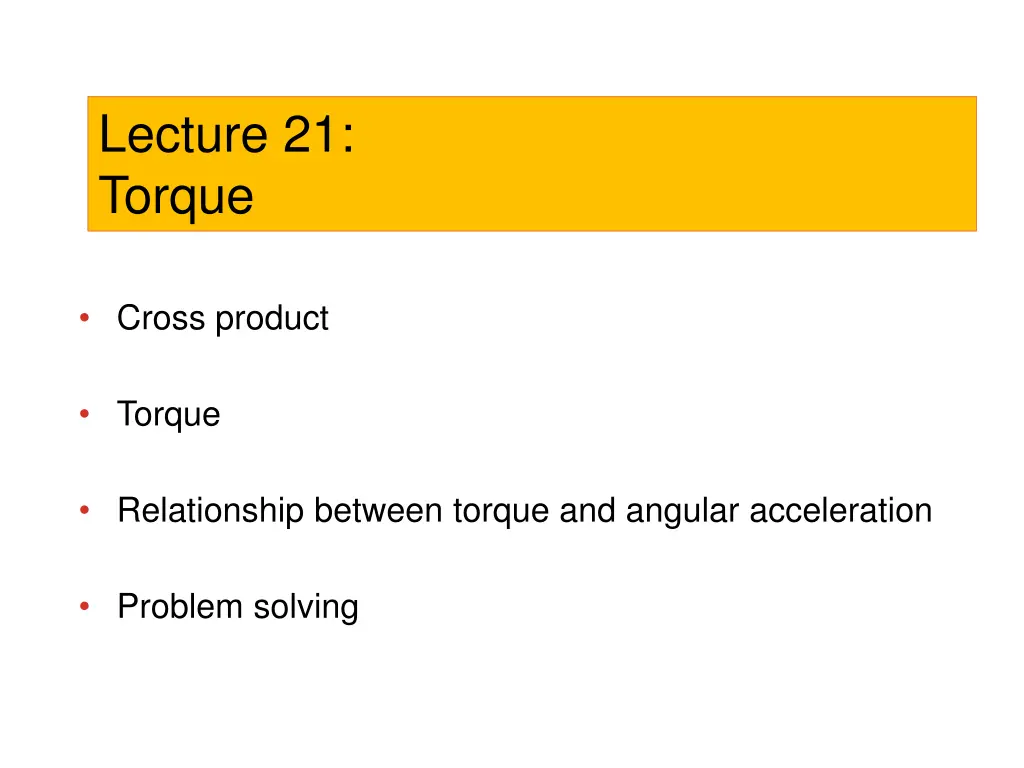
Understanding Torque and Angular Acceleration in Physics
Explore the concept of torque, its relationship with angular acceleration, and problem-solving techniques. Discover what causes rotation, how to calculate vector cross product magnitude and direction, and apply the right-hand rule for determining the direction of torque. Dive into examples involving rigid objects and rotational motion to deepen your understanding of these fundamental principles.
Download Presentation

Please find below an Image/Link to download the presentation.
The content on the website is provided AS IS for your information and personal use only. It may not be sold, licensed, or shared on other websites without obtaining consent from the author. If you encounter any issues during the download, it is possible that the publisher has removed the file from their server.
You are allowed to download the files provided on this website for personal or commercial use, subject to the condition that they are used lawfully. All files are the property of their respective owners.
The content on the website is provided AS IS for your information and personal use only. It may not be sold, licensed, or shared on other websites without obtaining consent from the author.
E N D
Presentation Transcript
Lecture 21: Torque Cross product Torque Relationship between torque and angular acceleration Problem solving
What causes rotation? Demo: bolt and wrench Need: Force Distance Perpendicular component
Vector cross product: magnitude ? ? = ? ? = ?? ??? = ? ?? = ?? ?
Vector cross product: Direction ? ? = ? ? is perpendicular to both ? and ? Direction: right hand rule thumb index finger = middle finger
Torque = ? ? | | = ????? = ?? = ? ?
Direction of torque Right hand rule: or easier: If force tends to produce rotation in the positive ?-direction, ??is positive: ?? = + ? ? sin(?) If force tends to produce rotation in the negative ?-direction, ??is negative: ?? = ? ? sin(?) Indicate positive ?-direction through curved arrow.
1?= +?1?1= +?1?1 2?= ?2?2 = ?2 ?2
Angular acceleration of rigid object Rigid object that can rotate about ?-axis. ?? moment of inertia about z-axis ?= ?? ? Compare to ??= ??? Begin with extended free-body diagram that shows forces and where they act on the object
Example 1: A uniform bar of length ? and mass ? can freely rotate about frictionless horizontal axis O at its end. The bar is initially in a horizontal position, is released from rest, and swings down under the influence of gravity. What is the initial angular acceleration of the bar just after it is released from rest? ????= ??2about O
Example 2: Rolling w/o slipping An object of mass ?, radius ? and moment of inertia ? is rolling without slipping down incline that makes an angle with the horizontal. Derive an expression for the object s linear acceleration.
Example 3: Coupled objects A small disk of radius ? is glued onto a large disk of radius ? that is mounted on a fixed axle through its center. The combined moment of inertia of the disks is ?. A string is wrapped around the edge of the small disk, and a box of mass ? is tied to the end of the string. The string does not slip on the disk. Find the acceleration of the box after it is released from rest.
